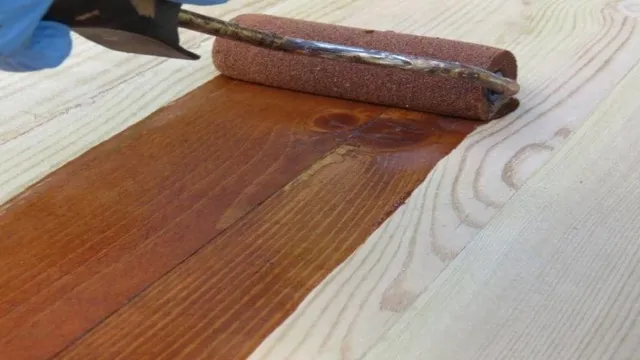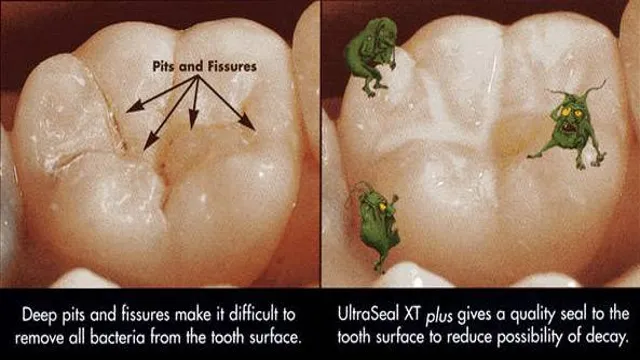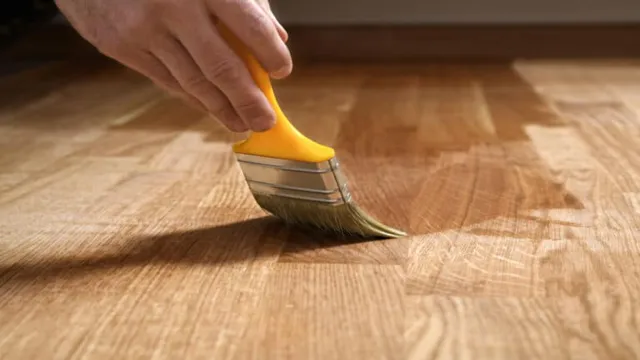Can You Put Polyurethane Over Linseed Oil? Get the Answer Here!

Are you thinking about applying a protective coating on top of your linseed oil finish? You’re not alone. Many DIYers and woodworking enthusiasts are curious about whether they can put polyurethane over linseed oil. While these two finishes may seem incompatible, the answer is, yes, you can apply polyurethane over linseed oil, but with some precautions.
Polyurethane is a clear varnish that is known for its durability and resistance to wear and tear. On the other hand, linseed oil is a natural wood finish that enhances the wood’s beauty and protects it from moisture. However, unlike polyurethane, linseed oil is not very durable and needs frequent reapplication.
By applying polyurethane over linseed oil, you can enhance the wood’s durability and extend the life of your finish. However, it’s important to note that polyurethane takes a longer time to cure than linseed oil. It’s crucial to wait until the linseed oil is fully cured before applying the polyurethane coat.
Otherwise, the polyurethane may not adhere and cause bubbling and peeling over time. To ensure the success of the new coat, it’s vital to sand the linseed oil finish lightly to remove any surface flaws that may interfere with good adhesion. Moreover, you should dilute the first layer of polyurethane to promote better penetration and adhesion.
With these precautions, the combination of linseed oil and polyurethane can create a beautiful and durable finish that enhances wood’s beauty and protects it from moisture.
Understanding Linseed Oil and Polyurethane
If you’re wondering whether you can put polyurethane over linseed oil, the answer is yes. However, it’s important to keep in mind that linseed oil takes a long time to dry, so you’ll need to be patient before applying the polyurethane. In addition, linseed oil tends to yellow over time, so if you’re looking to maintain the natural color of the wood, polyurethane may not be the best choice.
Ultimately, it depends on the look you’re going for and the level of protection you need for your wood. If you choose to use polyurethane over linseed oil, make sure to sand the surface thoroughly before applying the polyurethane to ensure a smooth and even finish. At the end of the day, choosing the right finish for your project can make all the difference in both appearance and durability, so it’s important to do your research and consult with professionals if you’re unsure.
What is Linseed Oil?
Linseed oil is a clear, yellowish oil derived from the ripe seeds of the flax plant. It has been used for centuries as a natural wood finish due to its hardening and protective properties. Linseed oil is ideal for polishing wood as it penetrates deep into the grain, providing a rich and long-lasting finish.
On the other hand, polyurethane is a synthetic finish that offers excellent durability and protection to woodwork. It is a clear, plastic-like coating that dries quickly and provides a glossy finish. While both linseed oil and polyurethane are popular wood finishes, they differ in terms of appearance and application.
Linseed oil forms a natural and matte finish that enhances the natural beauty of the wood, while polyurethane has a shiny and plastic-like finish that looks great on modern-style furniture. Ultimately, the choice between linseed oil and polyurethane comes down to personal preference and the intended use of the finished product.

What is Polyurethane?
Polyurethane Understanding Linseed Oil and Polyurethane: Polyurethane is a type of polymer that is known for its versatility as it can be found in many products including insulation, furniture, and adhesives. It is often used as a coating on wood to protect it against wear and tear, moisture, and damage from UV rays. Linseed oil, on the other hand, is a natural oil that is extracted from the seeds of the flax plant.
It is commonly used as a wood finish because of its ability to penetrate the wood and provide a protective barrier against moisture. However, linseed oil has a tendency to yellow over time, which can be undesirable for some applications. To combat this, polyurethane is often used as a topcoat over linseed oil to provide added protection while retaining the natural beauty of the wood.
When using these two products together, it’s important to follow proper safety protocols such as using a respirator and ensuring proper ventilation. Overall, understanding the characteristics of both polyurethane and linseed oil can help to ensure the desired finish and level of protection for your wooden projects.
Pros and Cons of Using Polyurethane over Linseed Oil
There are pros and cons to using polyurethane over linseed oil when it comes to finishing wood. One advantage of polyurethane is that it provides a durable protective layer to the wood surface, making it more resistant to scratches and damage. Polyurethane also gives a clear, glossy finish that enhances the natural beauty of the wood.
However, polyurethane typically takes longer to dry than linseed oil and requires multiple coats for optimal results. On the other hand, linseed oil is a natural product that penetrates deeply into the wood, protecting it from the inside out. It also dries faster than polyurethane and requires minimal maintenance.
However, linseed oil has a less glossy finish and may not provide as much protection against scratches and damage. So, to answer the question “can you put polyurethane over linseed oil?” the answer is yes, but it’s important to consider the pros and cons of each option to determine which one is best for your specific project.
Advantages of Using Polyurethane over Linseed Oil
When it comes to finishing woodwork, polyurethane and linseed oil are two popular options, but which is better? Polyurethane offers several advantages over linseed oil. Firstly, polyurethane forms a protective layer on the wood surface, preventing scratches, stains, and dents. This protective layer makes polyurethane a better option for high-traffic areas, such as floors and tabletops.
Secondly, polyurethane dries faster than linseed oil, which can take up to several days to dry. Polyurethane, on the other hand, dries within hours, making it a much more convenient option. Additionally, polyurethane has a longer lifespan than linseed oil, meaning it doesn’t need to be reapplied as often.
However, if you’re looking for an option that has a more natural finish, linseed oil may be the way to go. It provides a more rustic look and is a popular choice for antique furniture. In summary, polyurethane is a better option for durability and convenience, while linseed oil offers a more natural finish.
Disadvantages of Using Polyurethane over Linseed Oil
When it comes to finishing wood, two popular options are polyurethane and linseed oil. While polyurethane is known for its durability and resistance to water and scratches, it does have some disadvantages compared to linseed oil. One major drawback is its toxicity, as it releases harmful fumes during application and requires the use of protective gear.
Additionally, polyurethane can be challenging to apply, as it dries quickly and can leave brush marks or bubbles if not applied correctly. Linseed oil, on the other hand, is non-toxic and easy to apply, but lacks the durability and protective qualities of polyurethane. Ultimately, choosing between polyurethane and linseed oil will depend on functionality and personal preference.
How to Apply Polyurethane over Linseed Oil
If you are wondering whether you can apply polyurethane over linseed oil, the answer is yes, you can. However, there are a few things to keep in mind to ensure a successful finish. First, make sure the linseed oil is completely dry before applying the polyurethane.
This step is essential to prevent peeling or bubbling. You can use a lint-free cloth to wipe off any excess oil or wait for at least 24 hours for the oil to dry completely. Secondly, choose the right type of polyurethane for your project.
Oil-based polyurethane is the best option as it adheres well to linseed oil and provides a durable finish. It would help if you also sanded the linseed oil surface lightly to ensure the polyurethane can adhere properly. Applying the polyurethane in thin layers and allowing each coat to dry before the next one is essential for a smooth and even finish.
With these tips in mind, you can easily apply polyurethane over linseed oil and achieve a professional-looking result.
Step 1: Prepare the Surface
When it comes to applying polyurethane over linseed oil, proper surface preparation is crucial for a successful finish. Before starting, ensure that the surface is clean, dry, and free from any dust, dirt, or debris. It is recommended to sand the surface lightly using fine-grit sandpaper to remove any rough areas or unevenness.
After sanding, clean the surface with a damp cloth to remove any remaining dust. Once the surface is dry, you can apply the first coat of polyurethane. To ensure a smooth finish, apply the polyurethane in thin and even coats using a high-quality brush, roller, or sprayer.
Allow each coat to dry completely before applying the next one. With the proper preparation and application, you can achieve a stunning finish on your linseed oil project. So, are you ready to elevate your woodworking game with polyurethane over linseed oil? Let’s get started!
Step 2: Apply Polyurethane
The next step towards achieving the perfect finish for your linseed oil project is to apply polyurethane over it. Polyurethane is an excellent choice for providing a durable and protective topcoat for your wood surface. Before you start applying polyurethane, ensure that the linseed oil has fully cured.
This should take at least 24 hours, but check the manufacturer’s recommendation for exact drying time. Start by cleaning the surface thoroughly and lightly sanding it with fine-grit sandpaper. Next, make sure the work area is clean and well-ventilated to avoid any fumes or dust particles settling into your finish.
Begin by applying a thin coat of polyurethane with a brush, working in the direction of the wood grain. Allow the first coat to dry completely before lightly sanding it with a fine-grit sandpaper to remove any bumps or roughness on the surface. Then, apply the second coat of polyurethane in the same direction.
You can add a third coat if you want an even more robust finish. After the final coat, let the surface dry and cure for at least a day before using it. Opt for water-based polyurethane if you’re looking for a low-odor and eco-friendly option.
By following these easy steps, you’ll obtain a gorgeous, long-lasting finish for your linseed oil project!
Conclusion
In conclusion, the question of whether you can put polyurethane over linseed oil is an interesting one. It’s like asking if you can wear a tuxedo over a bathing suit – sure, you can do it, but it might not be the best idea. While technically feasible, putting polyurethane over linseed oil could result in peeling, bubbling, or overall unsatisfactory results.
So, if you’re looking to protect your wood surface with a durable and long-lasting finish, it’s best to stick with one type of finish rather than layering them. Remember, just because something is possible doesn’t always mean it’s advisable!”
FAQs
What is the difference between polyurethane and linseed oil?
Polyurethane is a synthetic finish that provides a hard, durable, and water-resistant coating, while linseed oil is a natural, penetrating oil that enhances the beauty of wood but does not offer as much protection.
Can you apply polyurethane over linseed oil?
Yes, you can apply polyurethane over linseed oil, but it is important to sand off any excess linseed oil and thoroughly clean the surface before applying polyurethane.
How long does linseed oil take to dry?
Linseed oil can take anywhere from a few days to a week or longer to fully dry, depending on the thickness of the application, the temperature, and the humidity.
Is polyurethane safe to use indoors?
Yes, polyurethane is safe to use indoors as long as it is allowed to fully cure before bringing furniture or objects back into the room. It is recommended to use in a well-ventilated area.
How many coats of polyurethane should I apply?
It is generally recommended to apply at least two coats of polyurethane for optimal protection and a smooth, even finish. However, additional coats may be applied for added durability and depth of shine.
Can you apply polyurethane with a brush or spray gun?
Yes, polyurethane can be applied with a brush, spray gun or roller. It is important to follow the manufacturer’s instructions for the best results.
How do you clean up after applying polyurethane?
Polyurethane can be cleaned up with mineral spirits or paint thinner, following proper safety precautions such as wearing gloves and working in a well-ventilated area.








